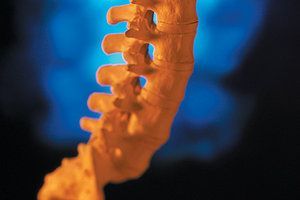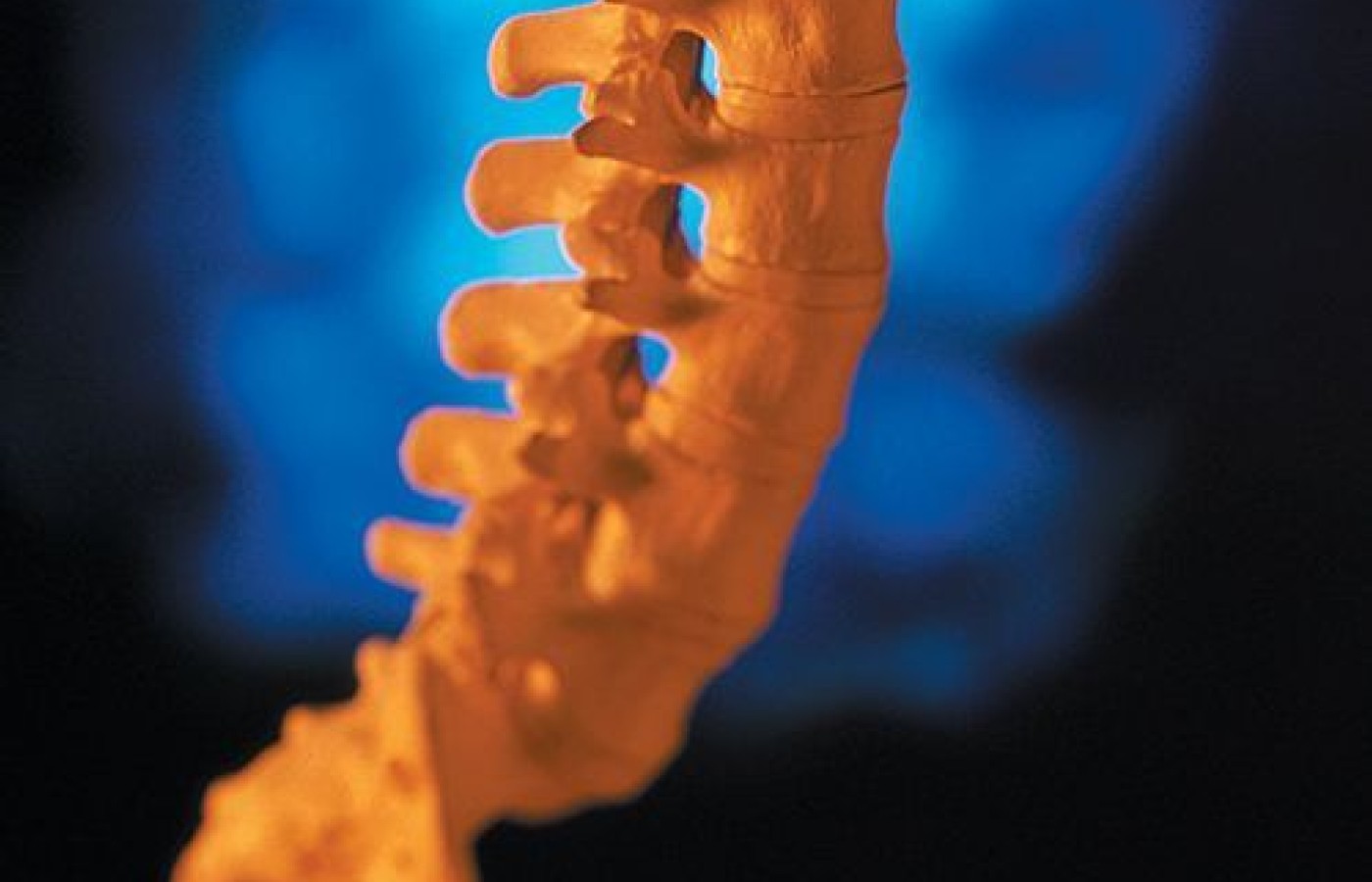Recent laws in New Jersey and California represent a disturbing trend that will negatively impact a practice’s ability to collect monies from patients, as well as expose them to significant penalties if the practice does not follow the mandatory guidelines to a T. Please be aware that a similar law may be coming to your state. The time to act is before the law is passed.
A Commonly Missed Spinal Fixation: The Upper Lumbar Spine (Part 2)
Editor's note: Part 1 of this article (Oct. 15 issue) discussed patient presentation and assessment of upper lumbar spine fixations.
Spinal Correction Techniques: Flexion / Distraction
As mentioned in part 1, using a flexion-distraction table is a great way to unlock this particular fixation. You have found the stuck segment. You have determined whether it is unilateral, midline or bilateral. Now place the patient prone on the table. A small bolster under the abdomen that takes them out of lumbar extension may help here.
Place your contact hand so you get good leverage from below on the affected segment. Firmly grasp the patient's ankle with your other hand. Oscillate the table into flexion and contralateral lateral bending simultaneously. The mammillary process or facet joint you are contacting will probably be quite tender to the touch.
Do a series of oscillations; 10 or so. As you do so, feel for whether the segment is releasing. Is it feeling less stuck, less tender? The contact on the spine, combined with the motion you are inducing below, is a great long lever. You can feel deep structures well. You will feel a lump, a stuck area, right over the facet joint as you distract and laterally bend.

One caution here, from someone who has been doing this for 34 years: Overusing your thenar pad or thumb is a long-term hazardous occupational exposure; especially if you plan on working with your hands for a long time. That is the only downside I know to the technique I am describing. I tend to want to use my first metacarpal-carpal to push upward on the segment. You can use a pisiform or hypothenar contact, or use your knuckles.
If you don't have a flexion-distraction table, lay the patient prone over a bolster or folded towel. Use a similar spinal contact, applying deep pressure. Place both of the patient's legs into lateral bending, away from the side you are mobilizing. Take a contact with your lower hand on the homolateral ankle. Push superior with your upper contact and simultaneously traction the leg inferior.
You can also correct this fixation with muscle energy technique, either side-lying or sitting. If you use muscle energy terminology, you are correcting an ERS listing, whereby the segment is stuck in extension, and rotated and side bent to the homolateral side. In motion palpation terminology, the segment resists flexion, lateral bending and rotation to the contralateral side. To correct this, take the patient into combined flexion, rotation, and lateral bending away to the barrier; have them resist you or gently push back against the lateral bend; and then take the fixated segment further into flexion, rotation and lateral bending away.
You can certainly use HVLA here. Remember that the segments resist both flexion and rotation away. The risk of HVLA is that you are adjusting into flexion. Be careful if you suspect a coexisting disc. Discs can be injured by combined flexion and rotation. Even if your manipulation aims at L1 or L2, you are still flexing the whole lumbar spine in your setup and thrust.
Additional Corrective Tools
I am always teaching the patient to self-mobilize the areas that are chronically stuck in their body. Flank stretches into mild flexion can help this area. The standing side stretch (a yoga pose) is a good example.
Areas of pain become both tight and weak. Teach the side plank, as this exercise directly addresses the inhibited quadratus lumborum and all of the side stabilizers. Once the patient masters the exercise, progress them to the more advanced side plank / prone plank, rotating between positions.
As always, soft-tissue therapy can be of value here. Two fascial areas come to mind in the local region. The obvious is the QL. A significant spot on the QL is the insertions onto the transverse processes of the second through fourth lumbar vertebrae. The second is the psoas. I tend to palpate the psoas directly anterior to posterior, directly through the rectus abdominis and the viscera.
Have the patient's legs bent over a bolster to relax the abdomen. Isolate a specific segment of the psoas that feels most rigid and release it, either through direct pressure or by using slightly upward pressure on the muscle; while you bring the affected thigh and leg into extension and abduction. This is using a long lever to stretch the muscle in a pin-and-stretch way.
When you find fascial restriction, check above and below along the same lines, and check the opposite side. The Stecco fascial manipulation model, and Tom Myers' anatomy trains, outline the tracks and sequences to follow here.
You also want to follow the nerves and treat them. Follow the superior cluneal nerve inferior from the spine. You may find tight areas in the flank. You will find a big knot just below the iliac crest. You'll often find tight knots following that line down to the posterior hip.
I like to palpate these distal points first, then address the spine, then recheck and treat these nerve points. The spinal adjustment makes such a difference for these peripheral nerves; it quiets them so effectively. Treat the spine first and then clean up the rest of the neural irritation. If these points are truly a neural irritation, they may not do as well with deep fascial work, which may irritate the nerve.
How could you treat the nerves directly? Are we treating the nerves,of ectodermal origin? Or are we treating the fascial linings of the nerves, of mesodermal origin? Using either model, can you quiet the nerve? This could be done through the use of topicals. I have used dextrose solutions, menthol or salicylate solutions, and Ecklonia cava [brown algae]. The jury is still out on which is the most effective. Electric stimulation, through microcurrent or other types of electric stimulation, may help. Light therapy also seems promising, as these points are quite superficial. I have used red LED, red laser and infrared laser. (I described this in detail in my article on peripheral nerves.)1
As a chiropractor, you treat a lot of lower backs. You need to be the expert; the one who can differentiate and address the multiple causes of lower back and pelvic pain. Assessing and releasing the upper lumbars will help some of your more difficult cases.
Reference
- Heller M. "Assessing and Treating Peripheral Sensory Nerves." Dynamic Chiropractic, June 1, 2014.



